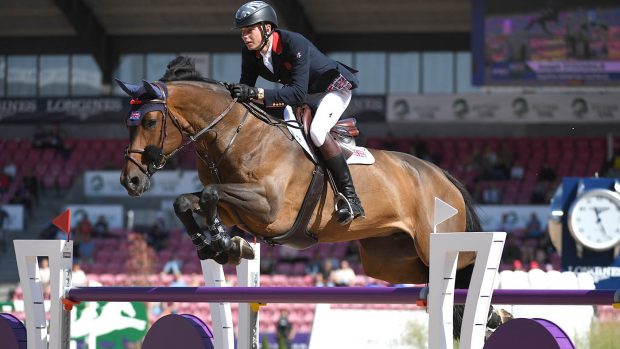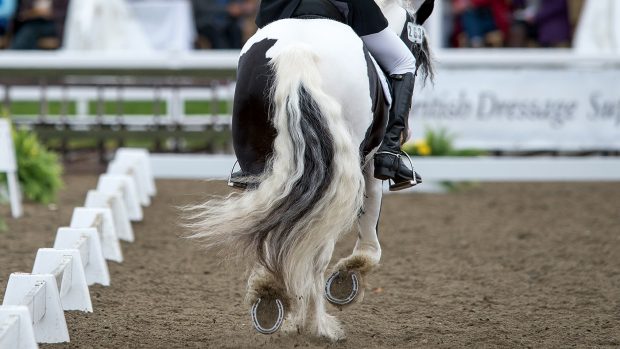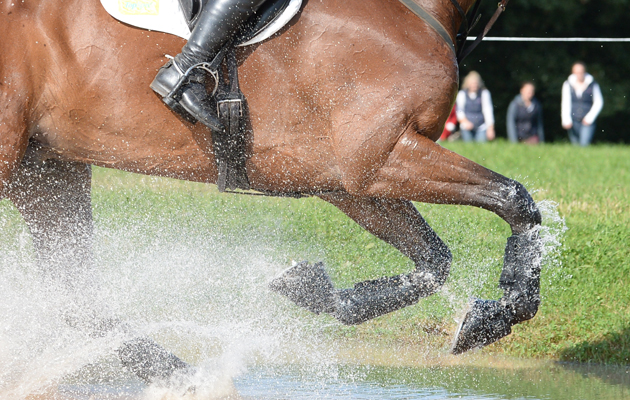Shaving off a few precious seconds in your jump-off round can be the difference between a win and a place. Stephanie Bateman speaks to showjumping star Tim Stockdale to find out his tips and advice on how to save time
1. Tight turns
“Practise sharper turns at home before and after the fence, because it’s important to have both those skills,” says Tim, who teaches riders two main types of turn that are commonly needed in jump-offs: “A” turns — when you are turning back to a parallel or double and need the horse to be sitting on his hocks with plenty of impulsion. The horse is bent around your leg so that you keep the power and fluency through the turn.
“B” turns — a straighter turn that uses the outside hand to guide the horse round. The horse falls in through the shoulder more. It is a flatter type of turn used in a directional change, such as a quick turnback after a fence where you have to change direction quite dramatically.
2. Jump on the angle
“Another key ingredient is being able to jump fences on the angle,” Tim says. “That is another aspect to practise at home, so that the horse starts to believe in the line that you’re taking and picks the fence up, rather than running out.
“You can practise different types of angle — one where you’re keeping with the angle of the jump and one where you are going against the angle of the jump.
“When you’re jumping into a fence that is angled towards you, it’s easier to hold the horse into it. If you’re sliding alongside a fence that is angled away from you — so the horse is badly crooked at 45 degrees — it’s much easier for the horse to run out, so you’ll need to have more conscious control.”
Continued below…

7 jumping questions you thought were too obvious to ask
There are some jumping questions that seem too obvious to ask — so we've asked them for you...
3. Plan your route
“When you are working out the jump-off course, look at which jumps are left up and which are removed, as this can have an impact on your lines,” says Tim. “Sometimes, course-builders produce a turn which wasn’t in the first round, such as the wings of a previous fence stood together to create an island, so you need to work out whether you go inside or around it.
“A good tip is to ride the line when you go back into the arena before starting your round to see whether it will work, as it can look different when you are on the horse. It will give you the chance to practise that turn before your jump-off starts.”
4. Weigh up the risk
“When I choose to take risks depends on the horse I’m riding and the competition,” says Tim. “The trick is to use the risk for the reward. Ultimately, a smaller class isn’t worth taking the risk, especially with a young horse that you are trying to produce for the future.
“If you are qualifying for the Horse of the Year Show or an international title, then there is more at stake, so you are more likely to take a risk.
“A lot of riders try to win every class they go in, but that sends the horse a bit crazy after a while. It just teaches the horse to chase towards every fence.
“I’m a great believer in getting clear rounds first and then add the speed. I was always taught that you go as fast as you can go clear. That’s the key thing.”
5. Take fewer steps
“If you can go round a corner in four strides rather than five or six, you’re going to save time,” Tim says. “Find the route where you take as few steps as possible, cutting out strides where you can and taking your lines as shallow as you can.
“On dog-leg distances, always try to take a more direct line to save a stride. If you can save two or three strides over another competitor, then you should be quicker.”
6. Don’t over-warm up
“When warming up, perhaps incorporate one or two turns in preparation for a certain turn in the ring,” advises Tim. “For example, I’d practise a sharp right turn if there was one in the jump-off, but I never overdo it.
“You want your horse to be relaxed, not boiling over and losing concentration.
“I would warm up similarly for the jump-off as for any jumping round, because I want my horses to be soft, supple, on the aids and listening to me, which is more conducive to clear rounds.
“You want your horse to be compliant in the hand because if they get too aggressive, they can start to run and block up, meaning they don’t use their body correctly.”
7. Choose control over speed
“Riders go wrong when they try to go too quickly,” Tim adds. “It’s a question of going faster but in balance, and opening the stride pattern up so that the horse extends the stride without flattening and losing impulsion.
“When the jumps start to get bigger, you can really see horses flattening if they are going too fast — you just know that they are going to have fences down.
“Sometimes it pays to go slightly steadier but get the turns that you want. This can shave off seconds and hopefully give you a clear round.”
8. Focus on the next fence
“Practise thinking ahead — it’s not about the jump you are going over at that time, it’s about how you are going to get to the next one.
“It’s similar to driving a car fast, you prepare a bit earlier for the bend and the turn.
“If you watch good riders against the clock, you’ll notice that mid-air, they are always looking at the next fence. They are very smooth as well — and smooth is fast.”
Why you won’t want to miss the H&H Festival of Showjumping…
The Horse & Hound Festival of Showjumping is a three-day unaffiliated showjumping festival with classes from 70 to 100cm, for both ponies and horses, being held at Arena UK, Lincs (13 to 15 July). There are a host of fantastic prizes on offer with riders invited to arrive on the Thursday evening for welcome drinks. Competition starts on Friday with warm-up classes running in the outdoor rings. Classes on the Saturday and Sunday will run as single phase, with results combined to decide the overall placings for each height. A topscore and a pairs competition are planned for Friday and Saturday evenings respectively. Evening entertainment will also feature, with a barbecue and disco planned. Find out more >>



